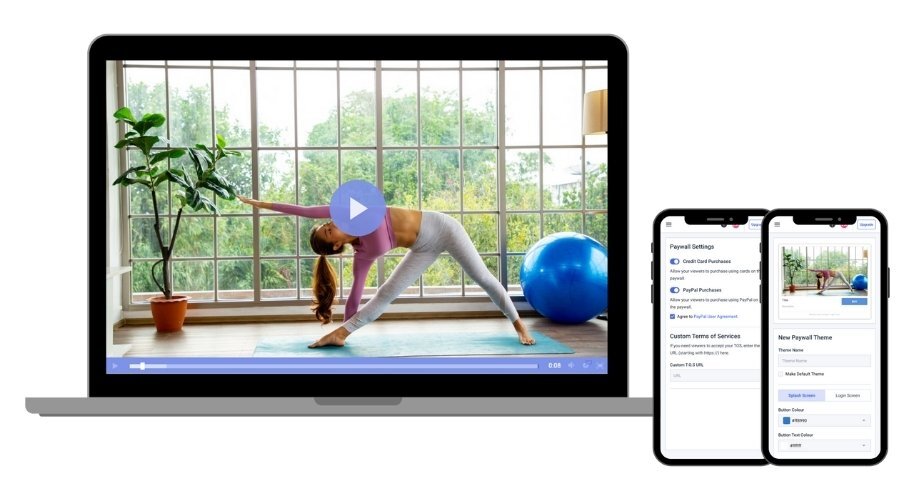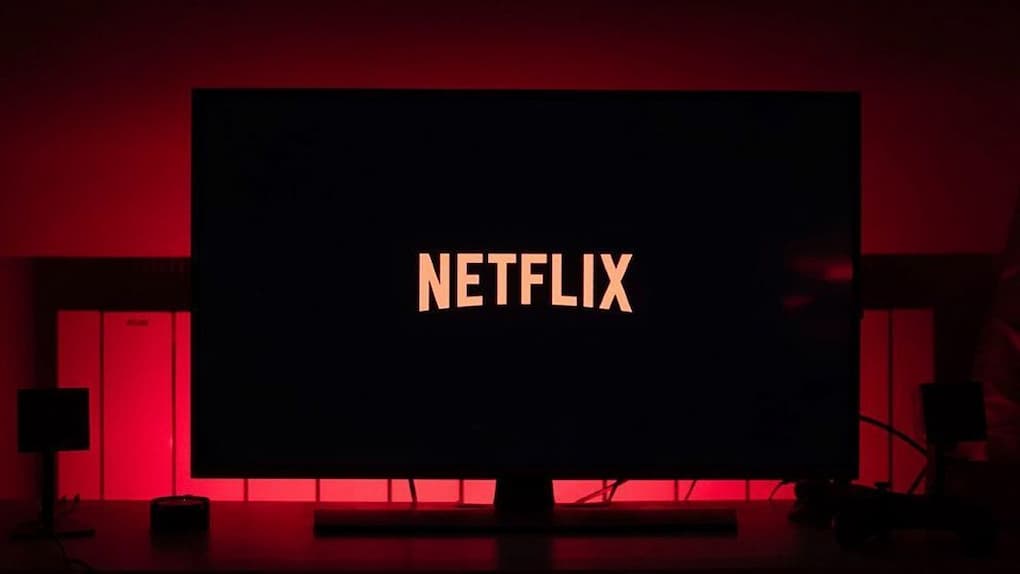Content Fragmentation and OTT Streaming – What Broadcasters Need to Know
The way we’re consuming content is always changing. The way media channels distribute is becoming more geared towards particular target audiences and personalized experiences. Hence the digital landscape and media consumption habits are changing, too. This fragmented media landscape is now an OTT trend that broadcasters are taking advantage of to propel their content.
We explore and cover content fragmentation in the context of OTT streaming. We look at the pros, cons, and challenges. We also look at use cases and compare content fragmentation to media fragmentation. Finally, we distil how media giants such as Netflix use content fragmentation in their online streaming strategies and provide you with our predictions for how content fragmentation will affect the OTT streaming industry.
Table of Contents
- What is Content Fragmentation?
- Content Fragmentation vs. Media Fragmentation
- Pros and Cons of Content Fragmentation
- Potential Challenges with Content Fragmentation
- How Netflix Uses Content Fragmentation
- Content Fragmentation and the Future of OTT Streaming
- Conclusion
What is Content Fragmentation?


Content fragmentation is a media distribution strategy that focuses on delivering collections of content that are designed for targeted audiences.
In terms of OTT streaming, it means offering different types of video content on different streaming platforms or devices. However, content fragmentation could be applied to different types of media, such as music streaming, podcasts, eBooks, articles, and so forth.
The purpose of this is to create a variety of platforms that are laser-focused on a specific type of video content to give users exactly what they are looking for. As a result, online video content is now spread out across many different video streaming platforms.
The Rise of Content Fragmentation
To understand the significance of content fragmentation in OTT streaming, it is important to take a step back and reflect on the major developments in media distribution over the past decade.
In the past, television series and films were owned and funded by a handful of production and distribution companies, such as Universal Pictures, Paramount Pictures, MGM, and Sony. Without a connection to these and a few other “top dogs,” most independent filmmakers didn’t stand a chance.
However, since online video streaming has grown in popularity, we’ve seen the growth of media distribution businesses that weren’t previously major players in the space. These include Netflix, Hulu, and Prime Video.
As these streaming platforms have grown, they’ve created production firms of their own which have allowed them to produce original series and movies.
Netflix, for example, started producing original content in 2013, releasing less than 10 titles in the next two years. Less than a decade later, the company is releasing hundreds of original titles each year that air exclusively on the Netflix platform.
Other platforms, both large and small, are following suit. Creating OTT streaming platforms and services has become easier than ever with the accessibility of professional online video platforms, such as Dacast. With content fragmentation, everyone can have a piece of the pie.
Content Fragmentation vs. Media Fragmentation
Since content fragmentation is still growing in popularity, some of the lingo surrounding it might seem a little cloudy. Terms like “media fragmentation” or “media-centric fragmentation” are closely related to content fragmentation.
All of these terms fall under the umbrella of audience fragmentation. In terms of media distribution, audience fragmentation simply means strategically splitting audiences by sending them to different platforms.
Media fragmentation is a type of audience fragmentation that focuses on grouping collections of content based on the type of media, such as OTT streaming technology, cable streaming, radio streaming, and so forth. OTT streaming content fragmentation would fall into this category.
User-centric fragmentation is also relevant here. It refers to collections of content that are curated by algorithms in response to a user’s behavior. The top streaming services use this to suggest titles to their users to expose them to more content from their collections. Netflix and YouTube have two of the most impressive algorithms when it comes to suggesting relevant video content.
Pros and Cons of Content Fragmentation


Like most other things, content fragmentation comes with a variety of benefits and drawbacks. Let’s weigh the pros and cons of this media distribution technique.
Content Fragmentation Pros
There are several pros to content fragmentation. For starters it allows users to access the content that they enjoy the most, and it allows broadcasters to tap into pockets of niche viewers.
The viewing experience feels almost personalized when a viewer opens their favorite streaming platform and finds a collection of content that is almost entirely in line with their preferences and interests.
Broadcasters that use content fragmentation can build loyal audiences and communities around their brands. Loyal online communities often serve as the foundation for brands that can be leveraged and monetized in a wide variety of ways.
Since content fragmentation targets very specific audiences, it brings an added benefit for broadcasters who want to monetize their videos through advertisements and sponsorships. Access to a highly targeted market is quite valuable for brands that want to advertise their products.
For example, if an OTT streaming platform focuses on documentaries and series about travel and adventure, brands in the travel industry would benefit tremendously by advertising on that platform. Since the potential return on investment is so high for those highly targeted ads, the broadcasters who own and operate the platform can charge a premium advertising fee.
Content Fragmentation Cons
There is a major downside of content fragmentation. When online video streaming distribution becomes so concentrated on unique industries, niches, and brands, endless numbers of OTT streaming services are born.
Think of sports, for example. We started with ESPN+ as more of an all-encompassing sports streaming service. However, not all sports leagues or conferences make their games or matches available on this platform. That is where sport-specific services like MLB.tv come into play.
Down the road, specific sports team franchises could launch their streaming platforms to monetize viewership from their fans and benefit from making their content more exclusive. With 30 MLB teams and 120 MiLB teams, the number of platforms could get excessive quickly. However, this is how content fragmentation works.
For broadcasters and media distribution companies, this creates a lot of competition, and quite frankly, a lot of noise. For viewers, this can require subscriptions to several different OTT streaming services which can get expensive. It also creates a headache for viewers with a variety of interests because it can be overwhelming to keep track of where to find their favorite programs and movies.
The streaming video industry will likely continue to grow in the direction of over-fragmentation as long as consumers continue to shell out money for additional streaming services.
Another con of content fragmentation is that it can cause polarization and extremism. When groups of people are only exposed to one type of content, biases can form and views can be narrowed. This can contribute to societal issues and social divides.
Potential Challenges with Content Fragmentation
In addition to the cons we mentioned above, there are a few potential challenges that broadcasters should keep in mind when creating and implementing a content fragmentation strategy.
First off, content fragmentation may lead to an increased risk of piracy. Subscription fatigue can cause viewers to take desperate measures to see their favorite shows and films. Rather than just paying for a subscription, users resort to bootleg sites and other illegal forms of media sharing.
OTT video content fragmentation also contributes to an interesting phenomenon that is known as the “attention economy.” There is a finite amount of attention among consumers which is determined by time, interest, and resources.
With more streaming platforms on the market and more content to choose from, media companies are forced to compete for the attention of consumers. With consumers being pulled in so many directions, it will be difficult for niche streaming platforms to become as big as Netflix and the other big players.
How Netflix Uses Content Fragmentation


Netflix has served as the blueprint for many OTT streaming services. As we mentioned before, Netflix was one of the earliest OTT streaming services, as well as one of the first streaming services to produce original content.
With that said it makes sense that Netflix has been at the forefront of developments in content fragmentation for online video streaming.
As we discussed earlier, Netflix has developed an algorithm that has done wonders in the arena of user-centric fragmentation. Although the streaming service has over 15,000 titles, including 1,500 original titles, the algorithm assesses user behavior to suggest other films or series that they would like the best.
Even though Netflix has thousands of titles, the platform can create an experience for users that is focused on their unique preferences.
Earlier, we mentioned that piracy has become an issue as content fragmentation has grown in popularity. While it is not technically piracy, password sharing has also become a major issue. One person pays for a subscription and shares their login information with their friends and family to give them access.
This has forced Netflix to test enhanced sign-in verification processes as part of an effort to crack down on password sharing. This has only been tested on some users so far, so it will be interesting to see if Netflix and other OTT streaming platforms fully implement similar protocols moving forward.
Content Fragmentation and the Future of OTT Streaming
At this point, the long-term effect of content fragmentation is quite unpredictable. There are so many ways that things could go. It could help level the playing field between smaller and larger media distribution companies, or it could spread revenue so thin that smaller companies may not have a real chance.
There is a possibility that content fragmentation could replace content aggregation down the road. In case you’re not familiar, content aggregation is a strategy that involves pooling together media from different sources to be served on one all-encompassing platform.
Content fragmentation has already led to subscription bundling, which is bringing us back to a situation that is similar to purchasing access to different channels on cable. Many television providers include access to different OTT streaming platforms as part of their packages.
Hulu, ESPN+, and Disney+ already offer a popular subscription bundle, and other major media companies will likely follow suit.
Conclusion
While there are some negatives, content fragmentation is a great technique as part of broadcasters’ marketing campaigns and marketing strategies. Media fragmentation that aims at a specific target audience appeases more niche audiences. This creates stronger relationships between broadcasters and viewers and can increase business revenue.
Are you looking to increase the quality of your OTT streaming? You need a professional-grade, complete OTT streaming solution—like Dacast. Dacast includes an easy-to-embed video player that you can add to any site or app. Furthermore, Dacast offers video monetization, white-label streaming, reliable video security, and so much more.
You can try Dacast and all its features free for 14 days today.
For regular live-streaming tips and exclusive offers, you can join our LinkedIn group.

 Connect
Connect
 Events
Events Business
Business Organizations
Organizations Entertainment and Media
Entertainment and Media API
API Tools
Tools Learning Center
Learning Center Support
Support Support Articles
Support Articles